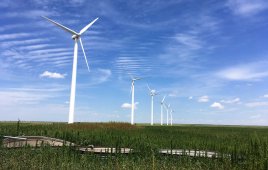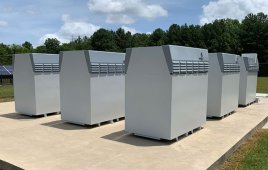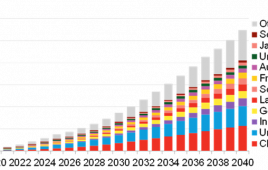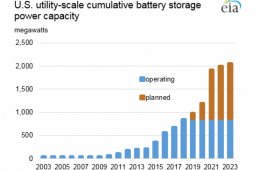Editor’s note: There is no mention of where the power will come from to generate the hydrogen, presumably by electrolysis. Ideally, it would be supplied by the growing Japanese wind industry.
Toshiba has announced that the H2One, the company’s autonomous hydrogen energy system, is now in operation at Musashi-Mizonokuchi Station on the JR Nambu (rail) Line in Kawasaki City, Japan. The system, a Business Continuity Plan (BCP), is used in normal, day-to-day operation and in the event of a disaster that knocks out public power.
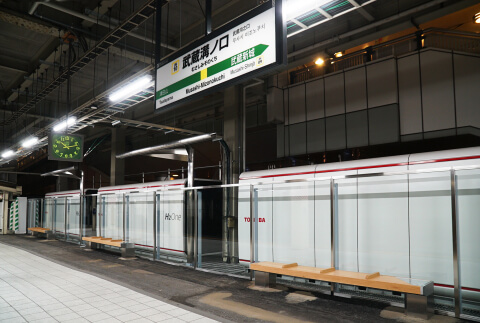
H2One will provide uninterrupted, off-grid energy supply to light part of the station concourse and its lavatories.
In emergencies, the H2One will provide uninterrupted, off-grid energy supply to light part of the station concourse and its lavatories. At other times, the system produces hydrogen and generates electricity, lowering consumption of mains electricity. In winter, the hot water it produces will be circulated through benches at the station to warm them. Toshiba’s H2EMS management system provides optimal control of the overall operation, including hydrogen production and power generation and storage.
Commenting on the start of operation, Hiroyuki Ota, Project Manager, New Energy Solutions Project Team of Toshiba Energy Systems & Solutions Company said: “I am delighted that we have installed an H2One at a train station for the first time. I am sure the use of the BCP H2One will save energy and raise environmental awareness among passengers using the station. Our goal is to help realize a low-carbon economy where CO2-free electricity from hydrogen is widely used.”
Toshiba has already delivered an H2One BCP model to the Kawasaki Marien public facility and Higashi-Ogishima-Naka Park in the Kawasaki Port area, and to an artificial island and pier in the Port of Yokohama. For more: www.toshiba.co.jp/index.htm
Filed Under: Energy storage

